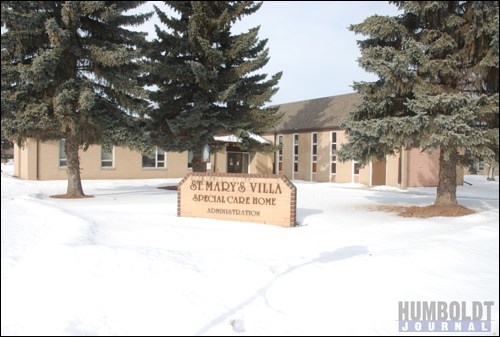They were cited last year, this year, they are facing charges.
The Saskatoon Health Region (SHR) has been charged with 11 regulatory offences by the provincial Justice department, in connection with a carbon monoxide leak at St. Mary's Villa in Humboldt on December 26, 2010.
In the early hours of December 26, 2010, 40 residents of St. Mary's Villa (SMV) were evacuated after carbon monoxide from a failed boiler got into the heating vents.
Thirty-nine residents of Dust wing at SMV and some staff were moved to another wing, before 24 residents, two family members and five workers were transferred to Humboldt District Hospital (HDH) for treatment.
Three residents died in the days and weeks following, and seven staff members were off for varying amounts of time.
The charges, related to labour and safety at the Villa, are under the Occupational Health and Safety Act. They are not criminal charges.
The three residents who died were already unwell, suffering from other, underlying conditions.
Last year, the SHR was cited for six violations of the Occupational Health and Safety regulations for failing to provide a safe workplace in connection to that incident.
Improper maintenance of boilers and ventilation systems, failure to ensure competent and sufficient supervision, insufficient supervisor training and a lack of a written emergency plan for dealing with carbon monoxide exposure were among the violations.
The SHR was informed of the charges against them on January 7, reported Bonnie Blakley with the SHR in an interview with the Journal on January 14.
They spent a week speaking with staff at the Villa and elsewhere in the region, and those served by the Villa, she said.
They have been talking about the charges with the region's teams and directors, to make sure everyone involved knew what was going on, she stressed.
Their first responsibility, they felt, was to their employees, to make sure they understood what the charges were.
"After we were done with that, we were talking with others in the organization to make sure they understood what was going on," Blakley told Saskatoon media on Monday.
"Certainly, we consider this to be an internal organizational issue... something to talk to our teams about, not necessarily having an effect on the public... We didn't think the message was to the public first... it was to our staff."
The SHR has, so far, not had an opportunity to speak with the Ministry of Justice or the Crown Prosecutor about the charges, Blakely said, and they are still working through the legalese to try to better understand what they are.
In layman's terms, the charges primarily surround the training of staff and the maintenance of equipment, she noted.
Blakley told media in Saskatoon that the health region knew charges were a possibility, though "we definitely have been working with Labour in response to all the contraventions that came as a result of what happened in 2010, certainly for the safety of those we serve and our employees there," she said.
According to SHR legal counsel Evert Van Olst, his initial impression is that the charges relate directly to the contraventions of the Act noted last year.
"They are not new concepts," he said, explaining that charges are another enforcement mechanism under the Occupational Health and Safety legislation.
The SHR will be in court to address the charges for the first time on January 21.
Should the corporation be found guilty, it is likely to result in fines, payable by the corporation, he added.
It is very early in the process of dealing with these charges, it was noted.
The SHR has been working on addressing the contraventions noted last year since they were informed of them.
The lessons they have learned from this incident at the Villa have been applied across the region as a whole, Blakley indicated.
There is one existing civil suit the SHR is facing as well, to do with the carbon monoxide incident at the Villa.
The suit has been brought by an individual who was exposed to carbon monoxide as a visitor, Van Olst said.




